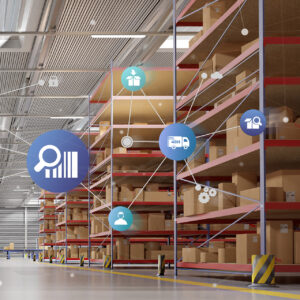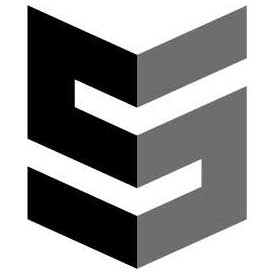The coronavirus pandemic has nearly impacted every business in some way or another, and few industries understand this better than manufacturers. At our Manufacturing CFO Summit we held virtually last December, Sikich Account Executive Mike Loumeau discussed the current tech trends in manufacturing and how they affect CFOs. Mike specializes in digital transformation technologies for manufacturers, distributors, and more.
Opportunities in Industry 4.0 vs. older systems
We started out by saying when it comes to moving from older systems, many people don’t know about all of the opportunities available until they get started. For example, there are opportunities for increasing efficiency. Once you tap into your data in new ways, such as implementing IoT devices into production mechanisms, and you start collecting that data, you’ll be able to get all sorts of insights and see patterns that you don’t realize are there.
“On that front, I think that’s the easy part, but I also think sometimes people come to this with unrealistic expectations for the short term,” our experts said. “I’ve seen people expecting a tenfold ROI on their expenditure when it comes to systems, which you know, might be there in the long run, but maybe that’s not the place you start. It’s a change of mindset for many people to engage in these things, and in each case it’s possible to really sort of assess the shallow or surface-level ROIs.”
Mike pointed out that if a company has “disjointed systems that aren’t talking to each other,” that there’s immediate ROI on a reduction of the time it takes to sort human errors from manual entry data.
It’s digging deeper into the system and the data where manufacturers and their CFOs will find the real value.
Disaster Recovery and Remote Access
Another important fact for CFOs to know is that older systems can be a huge security risk, especially in this new normal of a remote workforce.
Before the COVID-19 pandemic, most everyone worked inside one building, within the firewall of the company. This way, security is far easier to control. With so many more working remotely now, companies can no longer control security within the firewall. Employees have personal and work laptops at home, away from the internal firewall set up in the building. If you’re using disjointed systems in this remote access world, what is your strategy for disaster recovery if an employee accidentally loads malware onto a company mobile device? How fast can you get back up and running?
We explained that most old school IT departments’ initial reaction to this new reality is to lock everything down. However, by doing so, the employees aren’t able to access many of the efficiency tools they need to get anything done. IT has to find a balance between security and allowing employees to do what they do best. With on-premises systems, it’s very hard to strike that balance. With the cloud, however, you can easily control the integrity and security of the data employees are using across all platforms.
However, our experts caution companies to not have a knee-jerk reaction to say “out with the old, in with the new” when it comes to ERP. “The fantastic thing that’s been happening here with these new tool sets and a platform, like the Dynamics 365 platform, plus the Power Platform, Power Automate, as well as other toolsets, is the ability to leverage the systems in place, but with a focus on the data,” Sikich said. “Getting the data to where it needs to be so you can create actionable, either automatic feedback loops, or get the data to where it needs to be at the right time.” It’s “like magic” to some people.
After all, at the end of the day, this is all about having secure access to your own data and being able to leverage it.
What Microsoft Business Applications Do Right
Microsoft’s Power Platform with Power Automate, the Power Apps, etc., are making their way across all of the Microsoft business apps as well as Office 365. According to Sikich experts, they aren’t stopping there, either. Microsoft is “making it at least partially opensource in what we call the common data model, and creating and facilitating the creation of connectors to this ecosystem for third parties, so at this point we have hundreds of connectors that enable you to swoop in, connect to another system, get the data from there, and work on this.”
As we further point out, all of this is built to “hyper scale” in Azure. “I don’t think anybody else really has what Microsoft has in the way of being able to connect all of these pieces so seamlessly, so natively, and that’s really forcing other people to rethink.”
“This is a huge opportunity for people to be able to tap into and get started using things like AI quickly and unbelievably easily,” Sikich continued. “Creating apps, for example. This sort of appification. Breaking things up instead of trying to build some monolithic piece of software, just pulling together quickly the things you need to do the one thing, and creating value quickly.”
PowerApps for Manufacturers
PowerApps are a way to reprogram and connect all of these different services, applications, and your data into an app you can run anywhere. In manufacturing in particular, there are so many manual processes, it’s easy for things to not be properly tracked or labeled.
For example, so many manufacturing companies still rely on printed Excel reports to analyze in daily meetings. As a result, the people who need to make decisions quickly aren’t receiving the data as quickly as they possibly could. A PowerApp can turn these printouts into instantaneous information that the decision-makers can access on their mobile devices and make decisions through the app at the same time.
This alone creates a lot of new opportunities and actually invents whole new lines of business for people.
Microsoft HoloLens
Another tech trend many manufacturers are jumping on is Microsoft HoloLens. HoloLens is an augmented reality device with goggles that can display heads-up information right on the screen, and someone miles away can actually see that same information live. How can this new tech save manufacturers money? Here’s an example Mike provided.
We have a customer that makes these massive turbines, and they’re all over the world. Well, they also service them, so if you needed to decrease some of the time on to do that, what would that cost for you in terms of T&E, and not just that, but the delay time? How long is that turbine down?
What they did is that while using Dynamics 365 as an ERP and some field service stuff, they’re literally going to ship the device, this little HoloLens, out to this remote country, have a technician put it on there, and then a guy in the factory in the United States can actually look at that with the guy and say, “Right there, there you go. Okay, take that wire, move that.”
Or, “I see you need a part. I’ll ship it out, I’ll have it FedEx out tomorrow.” So look at that difference, especially with COVID. You can’t even fly to these places right now, but this customer, they figure they’ll save a million dollars a year of T&E by just sending those things out there to the local person, having them use it, and do it that way.
None of this would be possible without this Microsoft HoloLens technology. Augmented reality is a huge opportunity, especially in manufacturing. It’s often only tied to the HoloLens, although the HoloLens is sort of the state of the art, but you can also use AR and connect to somebody using a HoloLens, just using your phone and its camera, or a tablet. For instance, the iPad Pro has LiDAR built in, which gets you much better capabilities when it comes AR, because it can sense exactly the distances between things you’re looking at.
Not to mention, this is all out-of-the-box functionality. AR alone can change the game forever for customer service employees.
If you have any questions regarding any of the manufacturing tech trends we discussed, please reach out to us at any time!





